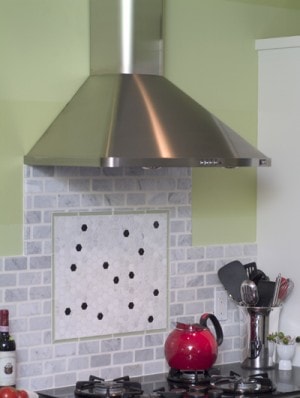The hood is installed directly above your range extending 3 inches past the range on either side.
Installing range hood venting through floor joist alternatives.
Range hoods will vent either through the cabinets above or through the wall.
Cover the exit with a vent cap cover and caulk around the edges to help prevent leaks back into your home.
Install the fan the filter and the light kit.
For other types of siding the installation steps are very similar.
Range hoods draw smoke steam and cooking aromas from your stovetop and vent them out of the house helping to refresh the air in your kitchen.
A kitchen range hood also called an exhaust hood is designed to keep the air in your kitchen clean.
Range hood installation can involve drilling a new vent hole through a wall which can require new wiring and ductwork while replacing old ones.
Range hoods help you to ventilate your kitchen workspace.
Detailed tutorial explaining how to position template.
Connect the vent hood using screws and anchors to ensure a good tight fit.
How to install a range hood vent.
Make sure that a venting range hood will vent through the right spot in the wall.
Caulk around the seams between the vent hood and the ceiling.
How to install a wall mounted black stainless steel range hood and how to properly vent to the outside.
We will assume that you have vinyl siding installed on your house.
Step 3 install the vent hood.
Many homeowners rely on their over the range microwaves to vent smoke and odors.
Some range hoods have internal blowers that recirculate the air in the kitchen without external venting.
The most common sizes are 36in 48in and 60in.
Make sure the range hood you are buying is the correct size that will fit.
The procedure is similar to the installation of the kitchen hood vent through the roof but it is slightly different though.
Ventilation is particularly important for homeowners with gas stoves since it helps to dissipate gases and smoke for the sake of safety as well as grease and odors in the kitchen.



















